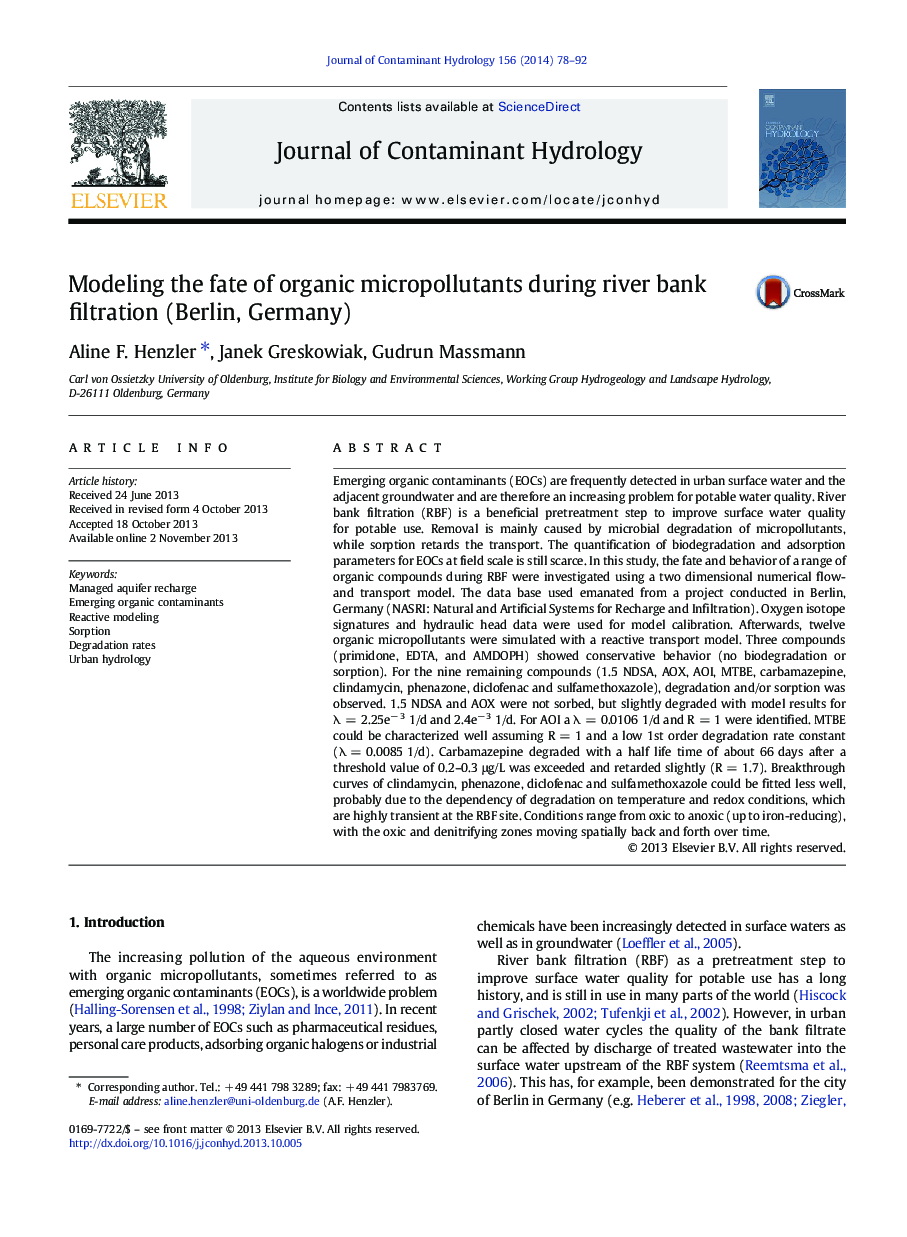| Article ID | Journal | Published Year | Pages | File Type |
|---|---|---|---|---|
| 4546594 | Journal of Contaminant Hydrology | 2014 | 15 Pages |
•The field-scale transport behavior of emerging organic compounds was investigated.•Detailed data from a river bank filtration system in Berlin, Germany was analyzed.•1st-order degradation and linear sorption parameters were estimated by modeling.•Three out of twelve compounds showed conservative behavior.•Nine substances showed biodegradation.
Emerging organic contaminants (EOCs) are frequently detected in urban surface water and the adjacent groundwater and are therefore an increasing problem for potable water quality. River bank filtration (RBF) is a beneficial pretreatment step to improve surface water quality for potable use. Removal is mainly caused by microbial degradation of micropollutants, while sorption retards the transport. The quantification of biodegradation and adsorption parameters for EOCs at field scale is still scarce. In this study, the fate and behavior of a range of organic compounds during RBF were investigated using a two dimensional numerical flow- and transport model. The data base used emanated from a project conducted in Berlin, Germany (NASRI: Natural and Artificial Systems for Recharge and Infiltration). Oxygen isotope signatures and hydraulic head data were used for model calibration. Afterwards, twelve organic micropollutants were simulated with a reactive transport model. Three compounds (primidone, EDTA, and AMDOPH) showed conservative behavior (no biodegradation or sorption). For the nine remaining compounds (1.5 NDSA, AOX, AOI, MTBE, carbamazepine, clindamycin, phenazone, diclofenac and sulfamethoxazole), degradation and/or sorption was observed. 1.5 NDSA and AOX were not sorbed, but slightly degraded with model results for λ = 2.25e− 3 1/d and 2.4e− 3 1/d. For AOI a λ = 0.0106 1/d and R = 1 were identified. MTBE could be characterized well assuming R = 1 and a low 1st order degradation rate constant (λ = 0.0085 1/d). Carbamazepine degraded with a half life time of about 66 days after a threshold value of 0.2–0.3 μg/L was exceeded and retarded slightly (R = 1.7). Breakthrough curves of clindamycin, phenazone, diclofenac and sulfamethoxazole could be fitted less well, probably due to the dependency of degradation on temperature and redox conditions, which are highly transient at the RBF site. Conditions range from oxic to anoxic (up to iron-reducing), with the oxic and denitrifying zones moving spatially back and forth over time.
